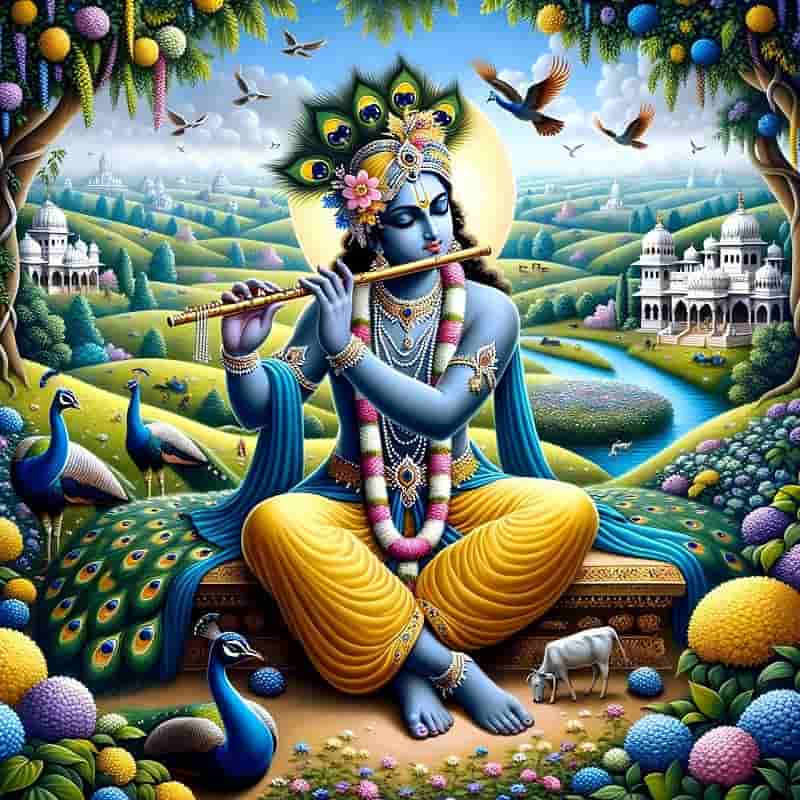In Hindu mythology and iconography, Lord Krishna is often depicted wearing a peacock feather in his hair. In the enchanting tales surrounding Lord Krishna's adornment of peacock feathers, a profound connection unfolds. The essence lies in Kanha's boundless affection for Radha. Within the opulent confines of Radha's palace, vibrant peacocks gracefully roamed. During a captivating dance to Shri Krishna's melodious flute, the peacocks, too, surrendered to an ecstatic rhythm, casting one of their feathers in joyful abandon. Lord Krishna, recognizing this symbol of love for Radha, delicately placed the peacock feather upon his hair. This act bestowed upon him the title of the divine adorned in a peacock crown.
Beyond the narrative, peacock feathers hold significance, representing both joy and sorrow in accordance with ancient beliefs. Much like life's kaleidoscope of emotions, peacock feathers exhibit a spectrum of hues. The symbolism extends, conveying that life's vibrancy mirrors our perception. In the shadows of a despondent mind, colors fade into monotony. Yet, in the radiance of joy, each hue gleams with brilliance. This profound message encourages a shift in perspective, illuminating the path to ease in life's journey.
In addition, this sacred adornment has symbolic significance and is associated with various stories and interpretations. Here are some common reasons given for Lord Krishna's choice of the peacock feather:
Victory Over Kaliya Serpent
One of the most well-known stories is about Lord Krishna's childhood exploits. According to Hindu mythology, the venomous serpent Kaliya lived in the Yamuna River. Krishna, as a young boy, subdued and danced on the serpent's hood. The peacock feather is said to symbolize Krishna's victory over Kaliya. The vanquished serpent is often depicted under Krishna's foot, and the peacock feather is a reminder of this triumph.
Connection with Lord Kartikeya
In the vivid tapestry of mythology, it's a common portrayal to see Lord Kartikeya, the son of Lord Shiva, gracefully riding upon the back of a majestic peacock. Some interpretations suggest that the peacock feather in Krishna's adornment may symbolize his connection with Kartikeya or Subramanya, who is also a revered deity in Hinduism associated with war and victory.
Symbol of Beauty and Grace
The peacock feather is known for its vibrant and iridescent colors. It is considered a symbol of beauty and grace. By adorning himself with the peacock feather, Lord Krishna is often seen as the epitome of divine beauty and elegance.
Connection with Radha
In Krishna's love story with Radha, the peacock feather is sometimes interpreted as a symbol of love and union. It is believed that Radha was enchanted by the beauty of the peacock feather and that Krishna wore it to please her.
Represents Nature and Creation
The peacock is associated with nature and creation in Hinduism. Its majestic appearance is seen as a representation of the beauty and diversity of the natural world. By wearing the peacock feather, Krishna is sometimes seen as a harmonious part of the cosmic creation.
Sign of Divine Protection
Some believers see the peacock feather as a symbol of protection. Lord Krishna, with the peacock feather in his hair, is considered a guardian and protector of his devotees.













0 comments:
Post a Comment